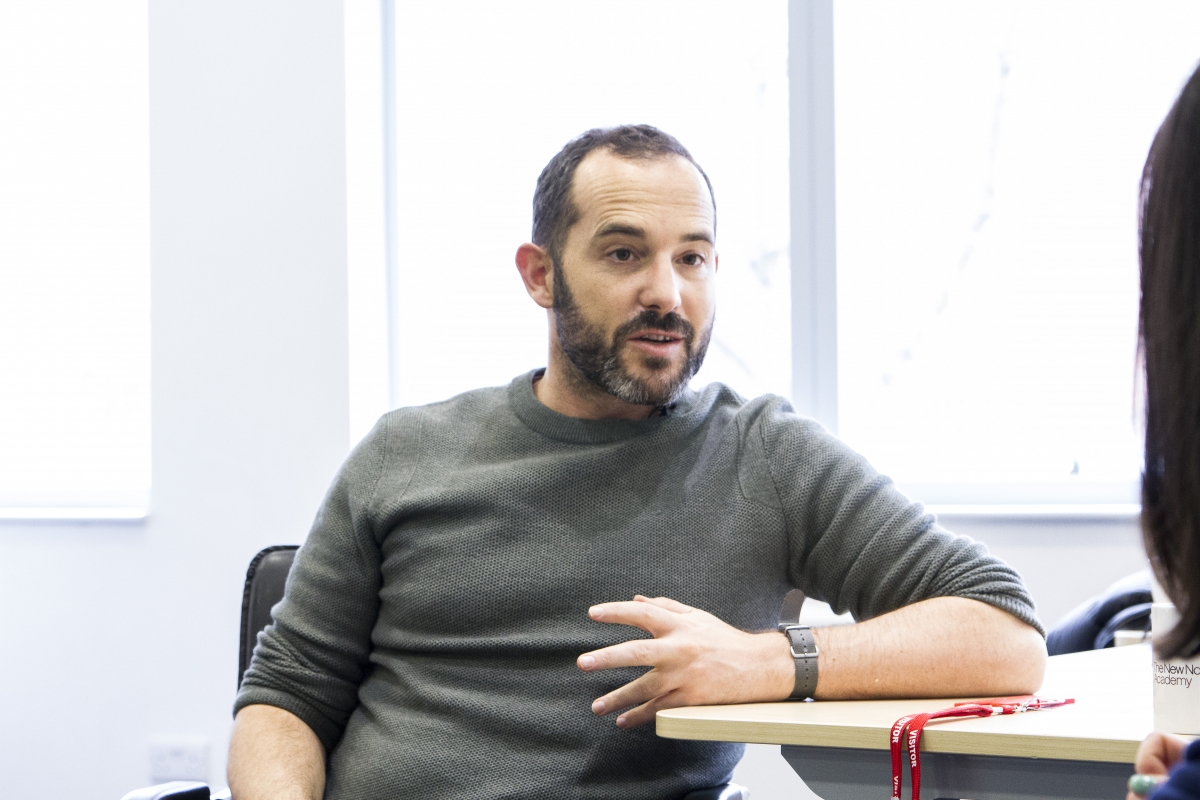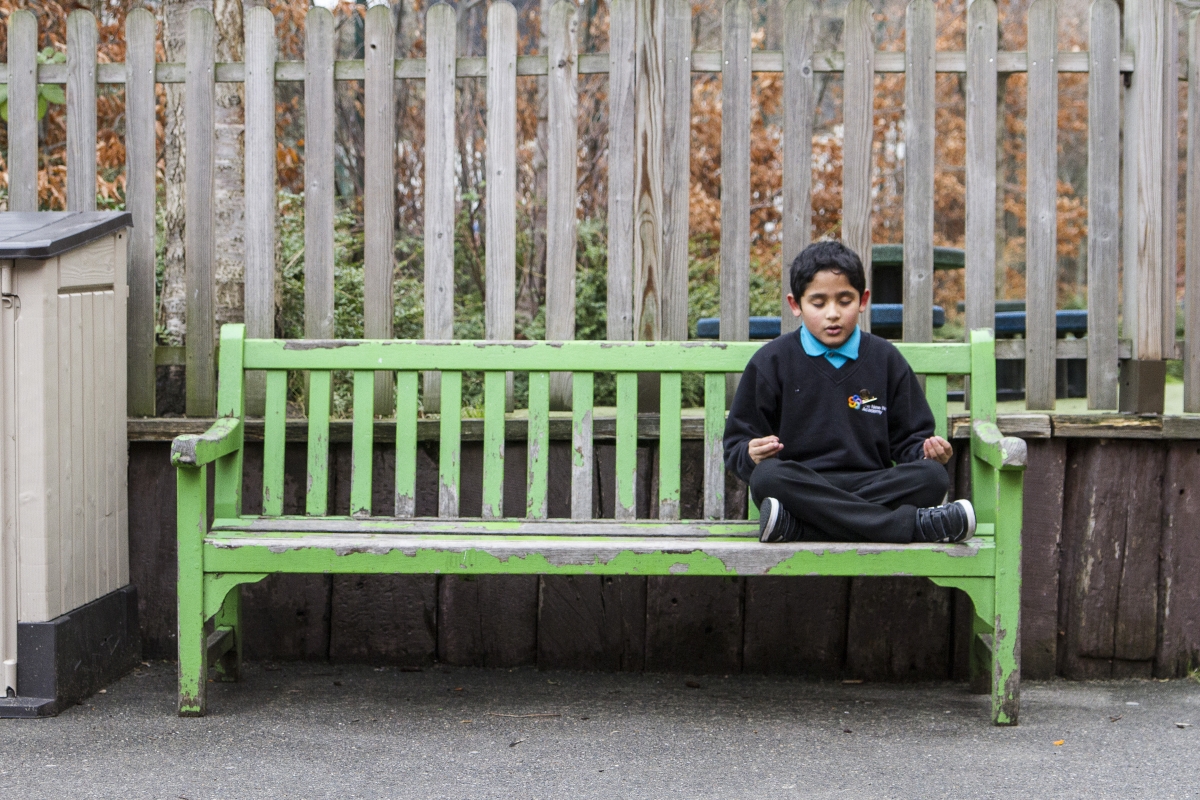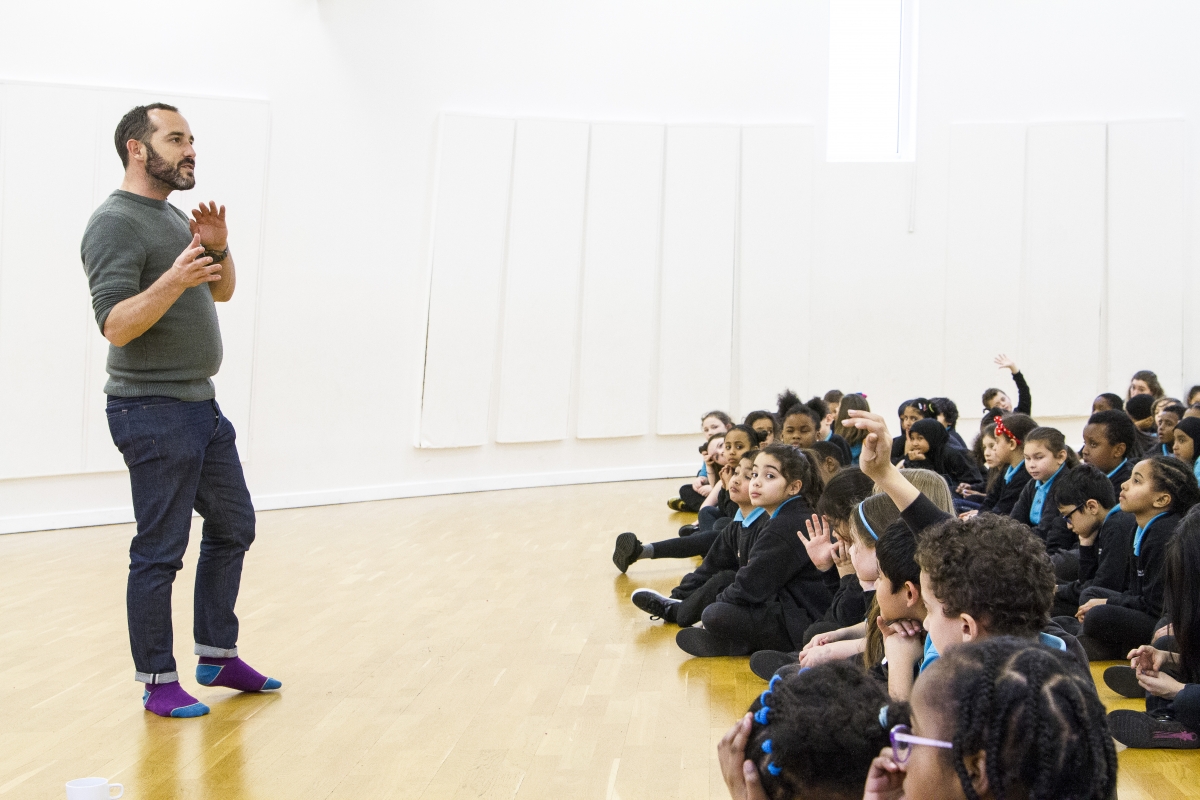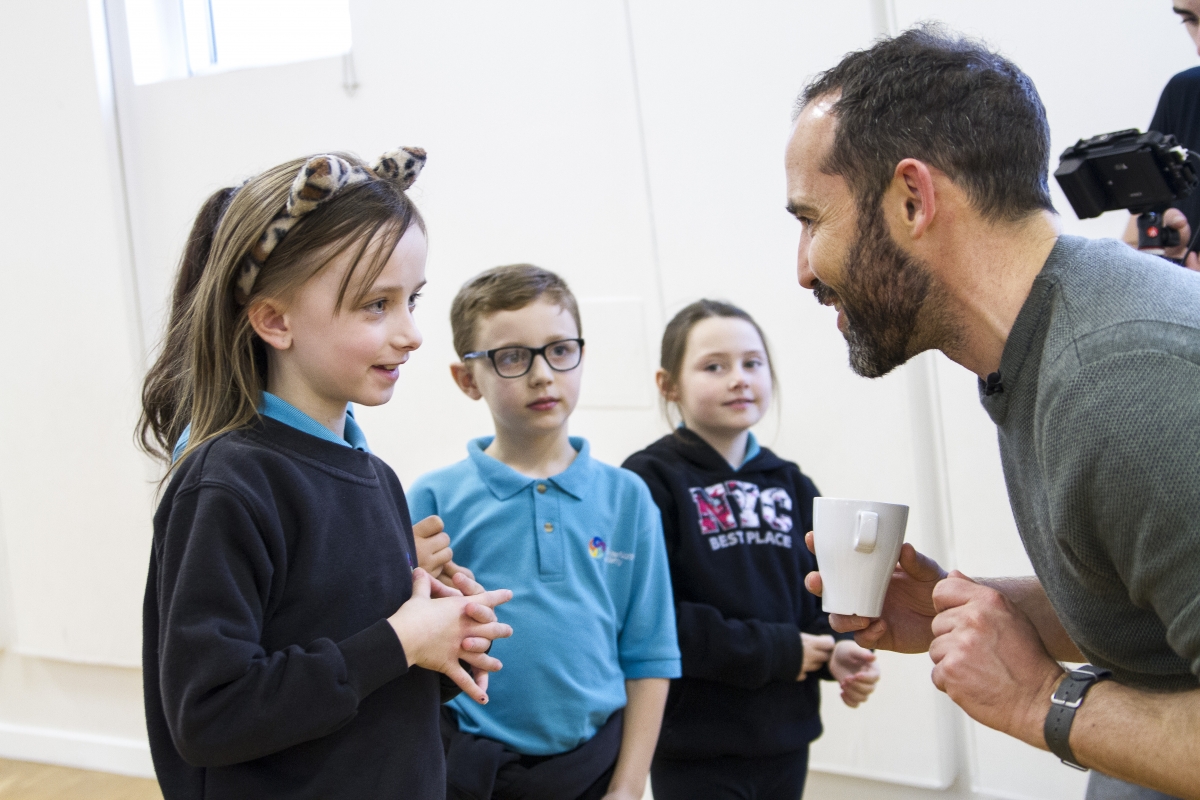The Kids are Alright? An Interview with Well-Being Ambassador Will Williams and a Case for Bringing Mindfulness to Schools
The No Good Terrible Very Bad Day
Imagine the last bad day you had. Maybe you were jolted out of a pleasant snooze by a complaining alarm. You’re late. You’re groggy and in your haste, you spill half your breakfast on a freshly cleaned shirt—and the other half now lies in a puddle on the floor. You frantically try to clean it up as you scramble out the door to catch your ride. You look like a marathon runner at the end of a race, flailing your wobbly arms and legs as you try to get the driver’s attention to wait for you. You sit down and realize that you forgot your notes for a very important presentation, the leftovers you brought for lunch have gone bad, and on top of all that, when you arrive at your desk, you hear that someone has started a nasty rumor about you. You finish the day sitting in a long meeting with a disappointed supervisor, waiting for your ride to pick you up, just wanting the day to be done.
We’ve all had a day that went something like this. Adulthood can be stressful, what with all the responsibilities, relationships, and obligations we have to manage all the time. When things go wrong, what are we to do? Fortunately, most of us have a solid support group to talk to or a partner or close friend who we can vent our frustrations with. Maybe we see a counselor, pastor, or guru who guides us through our misfortunes. Maybe we pray. Maybe we take it out at the gym. Collectively, we spend billions on well-being and stress-management per year.
But try reading the first paragraph again, only this time imagine being an eight-year-old child getting to school. Can you imagine being a child after a day like that, and not having the experience and understanding to communicate and process your feelings? You cannot drive yourself to the counselor or the church to seek advice. An eight-year-old can’t exactly show up unattended at the gym for a round of catharsis therapy. There is not a multi-billion-dollar industry producing stress-management products for children. Instead, your eight-year-old-self arrives at home from a bad day of school, with a pile of homework to do, knowing you’ll have to wake up and do it all again.
This little thought experiment is anything but imaginary. Our kids are struggling with the same mental health issues many adults are facing: depression, anxiety, stress, and even substance abuse. Think about this: 1 in 6 U.S. children aged 2–8 years had a diagnosed mental, behavioral, or developmental disorder in one study from 2016. Other studies have shown that school-related stress—often centered around managing school work and coping with conflict among friends and authority figures [1]—can have adverse consequences on the body, in the form of headaches and other somatic complaints. [2]
These are kids! In elementary school! The one place kids should be free to create, learn, explore, and enjoy the journey of growing up has become a place they are merely trying to survive. Our education and healthcare systems are not set up to deal with these ever-increasing mental health issues facing children. [3]
So, is there anything we can do?
 Will Williams is part of a plan to bring well-being to schools across the world. Image courtesy of Will Williams.
Will Williams is part of a plan to bring well-being to schools across the world. Image courtesy of Will Williams.
Will Williams Has a Plan
Enter Will Williams—Wellbeing Ambassador, Author, and Meditation Artist Extraordinaire. Will is part of a massive initiative supported by the Organization for Economic Co-operation and Development (OECD) called Education 2030, which aims to help countries find what knowledge, skills, and values are needed to help today’s students thrive. In February, Will guided a group of 4th and 5th graders through a meditation practice in their school and the results are promising. Will offered me a few minutes of his time to talk about the work he is doing, the problems as he sees them, and the solutions we can all take part in. Read on for a condensed (and adapted) version of our discussion—I hope you enjoy hearing from Will as much as I did.
Will pops up on my Zoom video chat. He’s halfway done with a smoothie, walking through what appears to be a backyard garden. I am greeted with a smooth British accent as he takes a seat on a living room couch.
IN MIND (IM): Can you tell us a little about your background and how you got into this work? What is it that you’re doing exactly?
WILL WILLIAMS (WW): The way I got into this was kind of unusual because I was a party boy. I wasn't really interested in meditation or mindfulness or in any way connected with it. I was working in the music industry burning myself out partying too hard, experiencing insomnia and feeling lots of fatigue. So I’ve got that going on at 25 years old and I’m thinking ‘is this as good as its going to get?’ After seven years of insomnia I’d tried various different things—you name it and I gave it a go. And none of it worked. Then randomly on a night out having a good party someone told me that I should do some meditation because it was amazing. So I thought ‘Okay, I'll try one more thing’ and the insomnia went away. I felt much more creative. I was super productive for the first time in years and I just felt like had energy every day.
Will’s experience is not just an anecdote or placebo effect. In fact, one meta-analysis of the effect of mindfulness meditation on insomnia shows some promising results, particularly when it comes to reducing total wake time during the night and increasing sleep quality [4]. And because getting good quality REM sleep boosts creativity, Will’s experience seems to be supported by research.
WW: That experience obviously piqued my curiosity, so I did various bits and bobs around Europe for a couple of years and it was just so compelling that I thought ‘I’ve just got to find out everything I can about this,’ and even thought that I might even end up teaching it.
So just like any of us who has a random life-changing experience would do (sarcasm ahead), Will decides to spend two and half years traveling around the world, learning from the greatest gurus and meditation masters he could find; even landing himself in the company of two of the “big dogs” in India. At the end of it all Will decides to come back to Europe to teach the general public about the benefits of meditation.
Then something extraordinary happened.
WW: As time went on we became more and more successful and I started getting lots of big hitters, you know calling me in to do lots of things. One of them was Richard Branson flying me to his island.
IM: Wow.
WW: Yeah, always a bonus! I was asked to speak with some of education folks because they were having a big education summit.*
*It turns out Richard Branson—owner of the Virgin Group is quite the philanthropist with a passion for improving education.
WW: So, I flew in and met with all these big shots in education and I gave a big speech on the need to improve the well-being of children and the teachers and the parents. Not focusing on each one in isolation, but to deal with them as a community ecosystem. And the head of the OECD was there, so they invited me to come and give a similar style speech at the OECD because they've been tasked with redefining education for the future of all of the member countries.
Imagine a hippie-looking-bearded-meditation-guy standing in front of what is basically a set-up like the United Nations. Very modest looking world leaders in front of little puffy microphones mounted on thin bendy wires. Everyone in suits and ties. Talking to each other as though they are recording a session for Fresh Air with Terry Gross. And Will asks for a wireless microphone and decides to give it his best “Winston Churchill” as he puts it. And then he guides the whole group into a meditation practice.
WW: By the end of that get-together, well-being had gone from being something that was going to be tacked on to physical education class, to a realization that childhood well-being needed to be at the very core of the future education system and should flow into every subject area. That it should be a foundational pillar and not just an add-on.
Will goes on to say that Education 2030 is really about the common realization that the current education system was designed for mid-19th century society and is totally inappropriate for 21st century needs. For a super accessible and frankly beautiful visual explanation of this idea, you can check out the Royal Society of Arts’ animated video of a speech from Sir Ken Robinson talking about this very idea. But in a nutshell, the issue is that schools are designed in the interest of industrialization—we educate students in batches, they sit in rows, and are corralled from room to room by bells. They are determined to be successful by their performance on standardized tests and are sent to the principal’s office for the slightest unruly behavior (likely caused by the fact that the curriculum is not engaging enough!). Robinson summarizes the issue perfectly when saying “We shouldn’t be putting [kids] to sleep, we should be waking them up to what is inside of themselves.”
The animation of Ken Robinson was posted in 2010. But look at the similarities to how Will defines the problem and solution almost ten years later.
 Kids may respond well to meditation practice in school. Image courtesy of Will Williams.
Kids may respond well to meditation practice in school. Image courtesy of Will Williams.
Understanding the Problem
IM: It sounds like well-being is kind of a central theme in a lot of this work you're doing; so maybe you can define what you mean by well-being.
WW: For me well-being is taking account of the physical, mental, and emotional state of human beings and developing them to find equilibrium and resilience. And giving them the tools to be able to dynamically interact with life in a way that is productive, fulfilling, and sustainable.
Note that this definition of well-being is closely aligned with the notion of eudaimonia, a word appearing regularly in Greek philosophy which means having a good and content spirit and being happy and healthy. In modern psychology we refer to the same state of being as flourishing, which is simply the extent to which someone has obtained social and psychological prosperity [5].
IM: And what are some of the obstacles to achieving well-being, defined this way, in schools with kids?
WW: One of the problems is that people are separating mental well-being and physical well-being. Admittedly, the majority of the focus in the world is still on physical well-being, so the mental well-being side of things is a bit of a late bloomer. But you can't separate physical or mental well-being. They are intrinsically linked. In the West we have a very symptom-specific understanding of health. And for as long as that prevails we’re always going to have people treating things in isolation and in dealing with our organism in a static way rather than a dynamic way. So, for me part of well-being is understanding the holistic dynamism of the human organism. I'm looking for the root source of anything that is causing dissatisfaction, ill health, suffering, and so on and so forth.
Another problem is that our education system is so left brain dominant. It's all about soaking up as much data as possible which is kind of redundant now that Google and Wikipedia exist. I think it's also really valuable if we can actually teach children about themselves. But there needs to be a retooling in the system from the ministers and administrators down. Part of Education 2030 is to have a lot of student agency and to empower the children to decide their own futures. I really want to be a bit of a fire starter amongst children and give them very accessible ways to learn about themselves because actually if you do can do that children are amazing learners. We've got to give these kids the tools to be able to heal themselves and to make sure that the best part of themselves flourishes. Then their agency becomes very powerful in a progressive way.
The idea of changing students’ mindsets to improve their educational and social success in school has a long tradition. In the late 1980s, pioneering work from Stanford Psychologist Carol Dweck began to identify two mindsets that students typically adopt. Children who have a fixed mindset believe that they have a certain amount of ability which cannot be changed or improved. On the other hand, children with a flexible or growth mindset believe that they can develop and improve through hard work and instruction [6]. Seems easy enough right? Just convince kids that they can improve and poof, problems solved. It turns out, parents and teachers who have flexible mindsets themselves aren’t always passing those mindsets on to students—in other words, it might be trickier to teach kids to have a flexible mindset than it would seem [7].
A crucial part of adopting a flexible mindset is approaching the self with a sense of compassion. Imagine your best friend, or maybe even your own child, is struggling with a failure. Wouldn’t most of us respond with compassion toward that person? Maybe we offer a consoling touch or word of encouragement. Self-compassion is simply offering ourselves the same kindness in the face of failure. And the research is beginning to show that self-compassion is crucial for mental health and well-being [8].
So not only do kids have to learn what a flexible mindset looks like they also have to learn to maintain that mindset in the face of failure by becoming their own self-advocates, counselors, friends, and sympathizers. This is pretty high-level stuff for an eight-year-old! Pair that with the fact that communication between the “emotional” and “rational” parts the brain is not fully developed until about age 25 [9], and you’re left with an emotional ball of hormones rolling down the hill of adolescence, collecting mass like a snowball after a blizzard.
But there is hope for the kids. Amazingly, the developing brain shows an enormous amount of plasticity, meaning that just about everything it experiences can change its structure and its functioning. This can be risky, because the developing brain will respond very strongly to stress and trauma in childhood and make it difficult to correct those changes later in life. But the flipside is that, with the right kind of input, the brain can also be spurred on toward healthy development during those same periods of heightened plasticity.
Is it possible to teach a developing brain how to manage stress, engage in self-compassion, adopt a growth mindset, and experience psychological fulfillment? This is where we pick back up with Will.
 Will teaching a group of school children about meditation. Image courtesy of Will Williams.
Will teaching a group of school children about meditation. Image courtesy of Will Williams.
A Possible Solution: Meditation in Schools
IM: So why do you think that meditation and the Mindfulness in Schools Project is going to be a successful route? Why not do something that maybe people are less skeptical about—you know there could be something that people may be readier to accept than some weird Guru Meditation thing. How are you getting in there with this approach and why do you think it’s important to go this way?
WW: I think it's very important to go this way because we're already in a very intellectually dominant world and if we just go with some intellectual training, quite frankly we’re not actually going to change that much at the emotional level or the instinctive level. The interventions that are actually going to be productive are going to be those interventions that help free those more subconscious elements the brain. And when that happens, productivity increases. The ability to learn to stay focused and to prioritize tasks or to absorb information goes up. The creative functions of the brain improve. And the more humanistic functions, like the ability to feel love and compassion, empathy, trust, self-connection and connection with others also gets enhanced. These techniques help to balance out the activation of the amygdala and the “mainframe” in the brain. If you look at all of the things that society already acknowledges are important…every single one of them is facilitated by these practices.
Sounds a little “too good to be true” yeah? Well the research amassing in psychology and neuroscience is actually on Will’s side here. For example, a handful of studies have shown reliably that meditation can boost attention and cognitive performance [10] and reduce mind-wandering [11]. At a psychological level, meditation has shown to improve emotion regulation, reduce anxiety and depression, boost positive affect, and increase compassion for the self and others [12,13], even in specific cases like reducing body dissatisfaction in women [14], and increasing compassion in health-care workers [15]. Meta-analyses—which are big studies that try to summarize an entire body of research—have shown that these psychological effects of meditation are reliable [16]. At the humanistic level, meditation can make us more empathetic to those who are suffering [17] and promote altruism [18]. The apparent panacea-like properties of meditation may be due to the fact that it activates a large-scale brain network which connects emotional, rational, and attentional brain areas [19].
But there is still a lot we don’t know about how meditation works. Neuroscience is still a relatively young field, and the study of mindfulness meditation is younger still. As we gain more and better methods for collecting and analyzing data we will surely gain a clearer picture of how meditation works. But looking at the list of potential benefits above, we might ask ourselves why we wouldn’t put everything we’ve got into studying how meditation can improve the human condition.
And maybe the work that Will is doing can help move us forward.
IM: You just meditated with some kids in a school, right? Tell me about that.
WW: Well, it was a kind of quite low achieving school in a relatively poor area with lots of children from all sorts of ethnic backgrounds, and we all came together and learned and they were all super enthusiastic about it. Even the “naughty kids” were really up for it! And every single one of them felt better as a result of doing it. It was really fun.
On the second day we came together as a full group—I probably won’t try and teach 98 eight-year-olds all at the same time again [laughing]. I think keeping them to groups of 20 or 30 is better. Kids are far more receptive than I would have realized and especially if you come at it in a way where they don't feel like you're telling them what they should do. So yeah, we're building a team at the moment and we’re teaching a number of teachers this summer. We're going to continue to grow so we can create a lot of teachers who can be servicing tens of thousands of schools every year, which we know will have a reach of millions of children a year. That's just one part of this whole framework that will prepare our children for the future and will give our society a much better chance of becoming much more highly functional.
Somewhere in the world Sir Ken Robinson is giving a standing ovation. Isn’t this what we want from our kids at school? Happy, competent, focused, creative, content, healthy. Prepared and ready to learn not simply be taught at. As Will said once during our conversation: “Do we want our children to thrive or are we satisfied with them merely surviving?” Let’s set them up to thrive.
 The results of meditation in schools are promising. Image courtesy of Will Williams.
The results of meditation in schools are promising. Image courtesy of Will Williams.
Will and his team of data scientists are actively collecting data in schools, looking at pre and post-tests of important metrics like happiness and stress, creativity, and other self-reports from the students, but they’re also looking at school grades, attendance, and sick leave. So far, the initial results are encouraging. Students are responding to meditation.
A Call to Action
IM: Broadly speaking, big picture here—How can people get involved? How can the readers of In-Mind get involved get involved in this kind of mission?
WW: That's a really lovely question. Certainly, as we start getting into the pilot stage, people with a scientific disposition and who are able to help make sure that all of our research is as best formulated as possible, that would be tremendously helpful.
And then as we get preliminary results and as we get final conclusions, publicizing that is really helpful. And then if there are people who are influencers in their local networks, using social media becomes quite a powerful tool. At this stage, if we can start getting the right people talking about this so that it becomes a dinner party topic of conversation, that will be tremendously important and powerful. Hopefully, amongst those people talking about it, will be the occasional journalist, will be the occasional school head teacher, and so on and so forth.
The more schools that volunteer to be part of the early adopters, the more options we have, the more we can actually make sure that we’re selecting schools to be part of a pilot that are truly reflective of the widest network of schools around the world.
IM: Ok, last thing—could you just paint me a picture of the year 2030 or 2050? What does the world look like after this has worked? What does success look like for you? What do you hope to see schools and kids and workplaces look like?
WW: A world where people have a sense of perspective at all times. Where our greatest humanity is on display every day and in every place. Where the things that humans really care about are part of our everyday values and not waiting to come out when we’re on our deathbed. Where people are interacting with each other at a human level. Where we are very empowered human beings who are living from a place of love, compassion, empathy, trust, and a sense of connection and collective well-being.
IM: And you think meditation can do this?
WW: Meditation in my view is the thing that will have the biggest impact on helping us move as a world towards this. It’s the biggest single thing we can do as a species and as a planet.
Will you do your part to bring this dream to our world, to our kids? Share this story on social media. Heck, even try meditating yourself—you can do it with Will and his team at www.beejameditation.com. If you have influence in your city, in politics, on social media? Start the conversation. Are you an educator or administrator? Consider getting involved in the project as a pilot testing school. At the very least, the next time you’re at dinner with friends maybe just ask, “Can we make school better for our kids?” Getting people thinking is already half the battle won.
References
1 Bauwens, J., & Hourcade, J. (1992). School-Based Sources of Stress Among Elementary and Secondary At-Risk Students. The School Counselor, 40, 97-102.
2 Torsheim, T., & Wold, B. (2001). School-Related Stress, School Support, and Somatic Complaints: A General Population Study. Journal of Adolescent Research, 16, 293–303.
3 Kataoka, S. H., Zhang, L., & Wells, K. B. (2002). Unmet need for mental health care among U.S. children: Variation by ethnicity and insurance status. The American Journal of Psychiatry, 159, 1548-1555.
4 Gong, H., Ni, C. X., Liu, Y. Z., Zhang, Y., Su, W. J., Lian, Y. J., ... & Jiang, C. L. (2016). Mindfulness meditation for insomnia: A meta-analysis of randomized controlled trials. Journal of Psychosomatic Research, 89, 1-6.
5 Diener, E., Wirtz, D., Tov, W., Kim-Prieto, C., Choi, D., Oishi, S., & Biswas-Diener, R. (2009). New measures of well-being: Flourishing and positive and negative feelings. Social Indicators Research, 39, 247-266.
6 Dweck, C. S., & Leggett, E. L. (1988). A social-cognitive approach to motivation and personality. Psychological Review, 95, 256–273.
7 Haimovitz, K. and Dweck, C. S. (2017), The Origins of Children's Growth and Fixed Mindsets: New Research and a New Proposal. Child Development, 88,1849-1859.
8 Neff, K. (2003). Self-compassion: An alternative conceptualization of a healthy attitude toward oneself. Self and Identity, 2, 85-101.
9 Arain, M., Haque, M., Johal, L., Mathur, P., Nel, W., Rais, A., Sandhu, R., … Sharma, S. (2013). Maturation of the adolescent brain. Neuropsychiatric Disease and Treatment, 9, 449-61.
10 Lutz, A., Slagter, H. A., Dunne, J. D., & Davidson, R. J. (2008). Attention regulation and monitoring in meditation. Trends in Cognitive Sciences, 12, 163-169.
11 Rahl, H. A., Lindsay, E. K., Pacilio, L. E., Brown, K. W., & Creswell, J. D. (2017). Brief mindfulness meditation training reduces mind wandering: The critical role of acceptance. Emotion, 17, 224-23
12 Hofmann, S. G., Grossman, P., & Hinton, D. E. (2011). Loving-kindness and compassion meditation: Potential for psychological interventions. Clinical Psychology Review, 31, 1126-1132.
13 Baer, R. A., Lykins, E. L. B., & Peters, J. R. (2012). Mindfulness and self-compassion as predictors of psychological wellbeing in long-term meditators and matched nonmeditators. The Journal of Positive Psychology, 7, 230-238.
14 Albertson, E. R., Neff, K. D., & Dill-Shackleford, K. E. (2015). Self-Compassion and Body Dissatisfaction in Women: A Randomized Controlled Trial of a Brief Meditation Intervention. Mindfulness, 6, 444-454.
15 Boellinghaus, I., Jones, F. W., & Hutton, J. (2014). The Role of Mindfulness and Loving-Kindness Meditation in Cultivating Self-Compassion and Other-Focused Concern in Health Care Professionals. Mindfulness, 5, 129-138.
16 Sedlmeier, P., Eberth, J., Schwarz, M., Zimmermann, D., Haarig, F., Jaeger, S., & Kunze, S. (2012). The psychological effects of meditation: A meta-analysis. Psychological Bulletin, 138, 1139-1171.
17 Rosenberg, E. L., Zanesco, A. P., King, B. G., Aichele, S. R., Jacobs, T. L., Bridwell, D. A., ... & Lavy, S. (2015). Intensive meditation training influences emotional responses to suffering. Emotion, 15, 775-790.
18 Wallmark, E., Safarzadeh, K., Daukantaitė, D., & Maddux, R. E. (2013). Promoting Altruism Through Meditation: An 8-Week Randomized Controlled Pilot Study. Mindfulness, 4, 223-234.
19 Tang, Y.-Y., Hölzel, B. K., & Posner, M. I. (2015). The neuroscience of mindfulness meditation. Nature Reviews Neuroscience, 16, 213.


